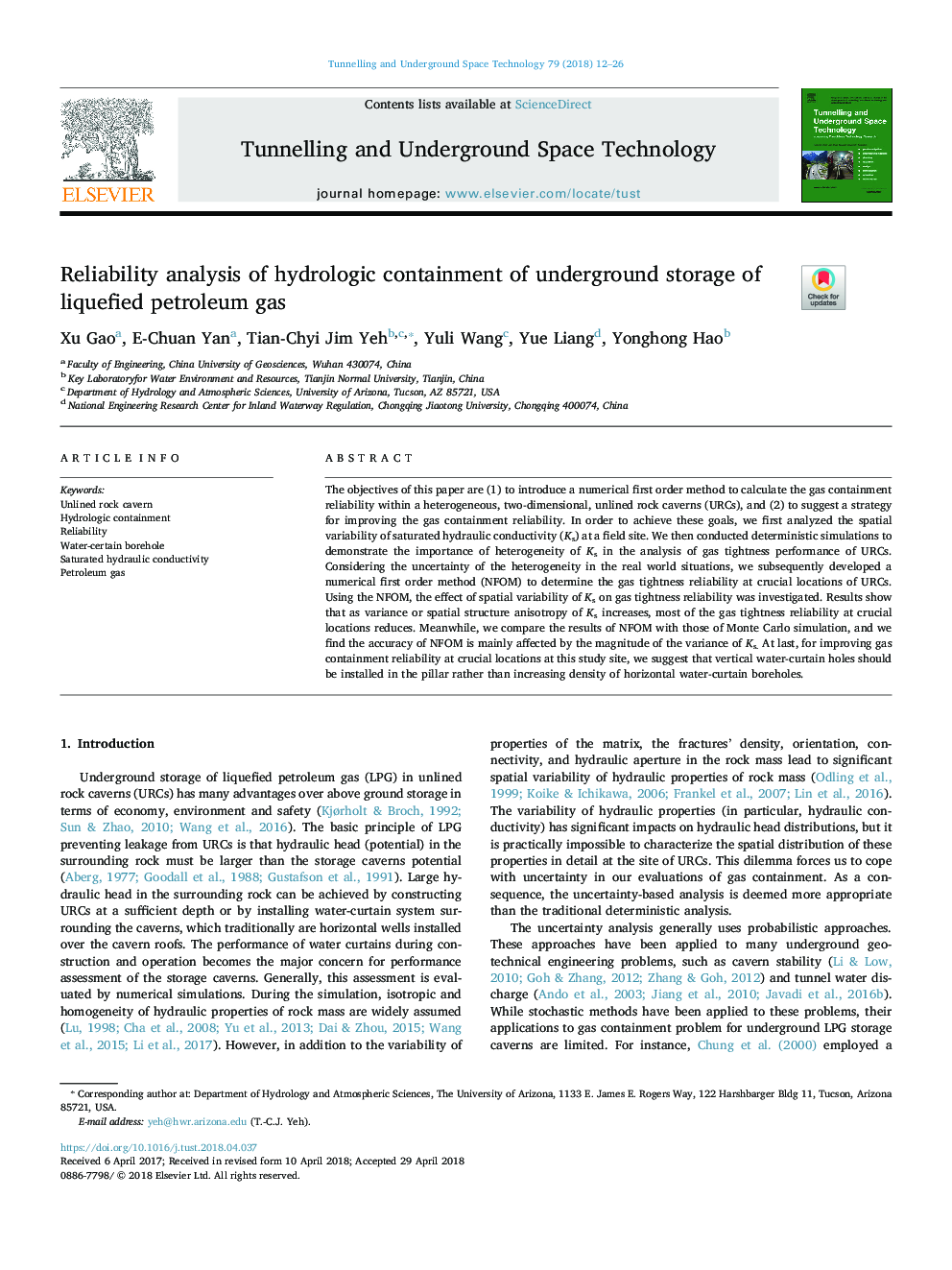| Article ID | Journal | Published Year | Pages | File Type |
|---|---|---|---|---|
| 6782171 | Tunnelling and Underground Space Technology | 2018 | 15 Pages |
Abstract
The objectives of this paper are (1) to introduce a numerical first order method to calculate the gas containment reliability within a heterogeneous, two-dimensional, unlined rock caverns (URCs), and (2) to suggest a strategy for improving the gas containment reliability. In order to achieve these goals, we first analyzed the spatial variability of saturated hydraulic conductivity (Ks) at a field site. We then conducted deterministic simulations to demonstrate the importance of heterogeneity of Ks in the analysis of gas tightness performance of URCs. Considering the uncertainty of the heterogeneity in the real world situations, we subsequently developed a numerical first order method (NFOM) to determine the gas tightness reliability at crucial locations of URCs. Using the NFOM, the effect of spatial variability of Ks on gas tightness reliability was investigated. Results show that as variance or spatial structure anisotropy of Ks increases, most of the gas tightness reliability at crucial locations reduces. Meanwhile, we compare the results of NFOM with those of Monte Carlo simulation, and we find the accuracy of NFOM is mainly affected by the magnitude of the variance of Ks. At last, for improving gas containment reliability at crucial locations at this study site, we suggest that vertical water-curtain holes should be installed in the pillar rather than increasing density of horizontal water-curtain boreholes.
Related Topics
Physical Sciences and Engineering
Earth and Planetary Sciences
Geotechnical Engineering and Engineering Geology
Authors
Xu Gao, E-Chuan Yan, Tian-Chyi Jim Yeh, Yuli Wang, Yue Liang, Yonghong Hao,
